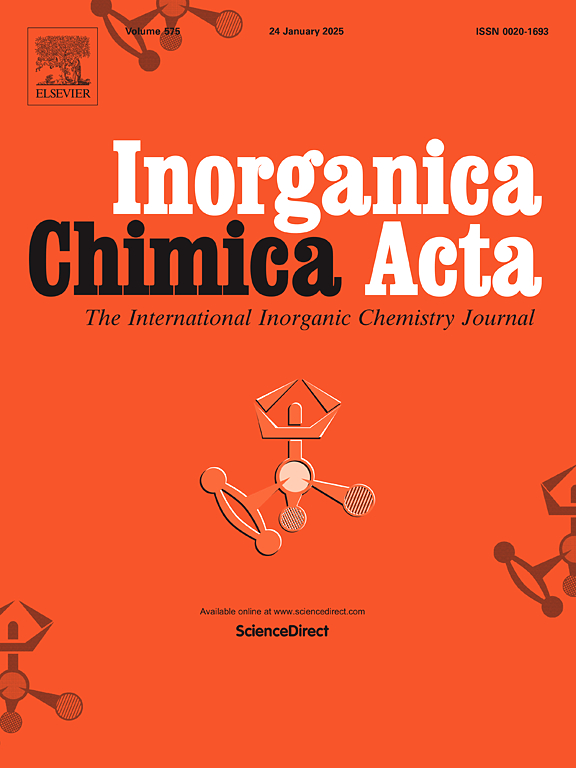Photoluminescent Pt(II) and Pd(II) complexes [M(diphosphine)(btdt)] of the 2,1,3-benzothiadiazole-5,6-dithiolate ligand
IF 2.7
3区 化学
Q2 CHEMISTRY, INORGANIC & NUCLEAR
引用次数: 0
Abstract
We study luminescent properties of complexes with 2,1,3-benzothiadiazole-5,6-dithiolate (btdt2−) that combines chromophore heterocyclic unit and chelating thiolate groups. A series of new heteroligand complexes with the general formula [M(dppx)(btdt)] were chosen (M = Pt, Pd; dppx = diphenylphosphinomethane (dppm), diphenylphosphinoethane (dppe) and diphenylphosphinoethilene (dppen). Combined experimental and TD-DFT studies reveal negligible effect of the diphosphine ligands on the absorption spectra of the complexes in the solid state and solutions. The first non-dark absorption band at 410–430 nm is attributed to an intraligand (localized on btdt moiety) transition with a minor contribution of a metal–to–ligand charge transfer. In solid state, all complexes exhibit vibrationally-resolved phosphorescence at room temperature in the range of 650–800 nm with a large Stokes shift of ca. 8800 cm−1, and with the observed lifetimes of the excited state of 5–110 μs. The presence of an emission signal for [Pd(dppx)(btdt)] is a rare case of room-temperature phosphorescent Pd complexes. In the THF solutions under an argon atmosphere, only the Pt complexes reveal luminescent signal peaked at 650–800 nm, which is quenched upon contact with air.

求助全文
约1分钟内获得全文
求助全文
来源期刊

Inorganica Chimica Acta
化学-无机化学与核化学
CiteScore
6.00
自引率
3.60%
发文量
440
审稿时长
35 days
期刊介绍:
Inorganica Chimica Acta is an established international forum for all aspects of advanced Inorganic Chemistry. Original papers of high scientific level and interest are published in the form of Articles and Reviews.
Topics covered include:
• chemistry of the main group elements and the d- and f-block metals, including the synthesis, characterization and reactivity of coordination, organometallic, biomimetic, supramolecular coordination compounds, including associated computational studies;
• synthesis, physico-chemical properties, applications of molecule-based nano-scaled clusters and nanomaterials designed using the principles of coordination chemistry, as well as coordination polymers (CPs), metal-organic frameworks (MOFs), metal-organic polyhedra (MPOs);
• reaction mechanisms and physico-chemical investigations computational studies of metalloenzymes and their models;
• applications of inorganic compounds, metallodrugs and molecule-based materials.
Papers composed primarily of structural reports will typically not be considered for publication.
 求助内容:
求助内容: 应助结果提醒方式:
应助结果提醒方式:


